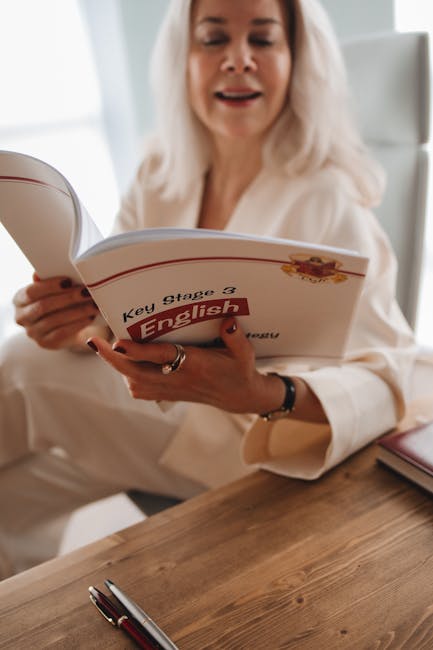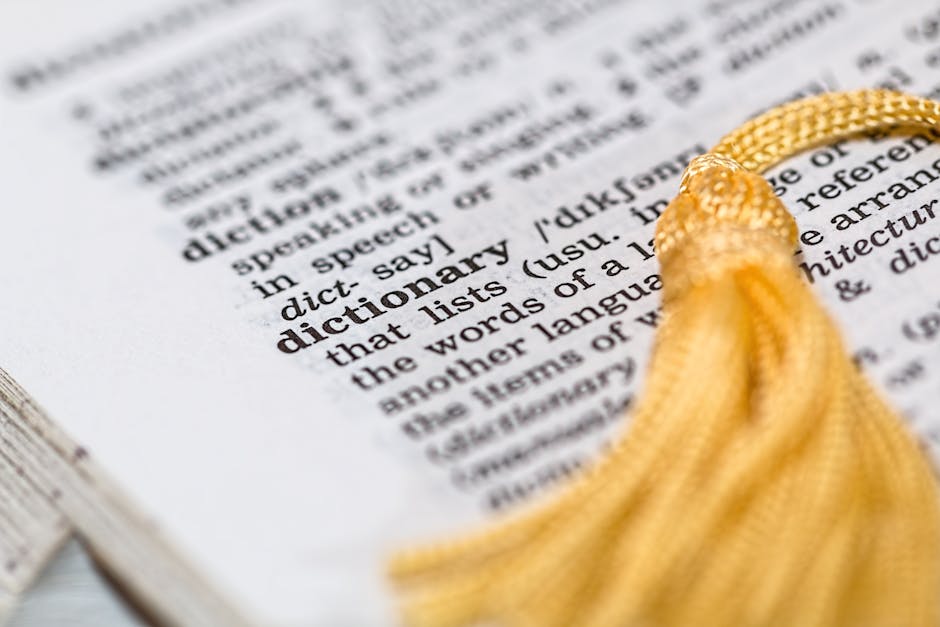Introduction to Language Learning Ease for English Speakers

Learning a new language can be an exciting yet daunting journey, especially for English speakers looking to expand their linguistic horizons. The ease of learning a language often hinges on factors like linguistic similarity to English, cultural exposure, and the availability of learning resources. Some languages share roots with English, making vocabulary and grammar more intuitive, while others have regular pronunciation rules or widespread usage that aids accessibility. This article aims to guide you in selecting the easiest language to learn based on credible data and practical insights, helping you embark on a rewarding linguistic adventure with confidence.
Language difficulty varies due to elements such as grammar complexity, vocabulary overlap, pronunciation challenges, and the estimated time required to achieve proficiency. For instance, the Foreign Service Institute (FSI) categorizes languages based on the approximate hours needed for English speakers to learn them. Category I languages, considered the easiest, typically require around 600 hours of study to reach a general professional proficiency level. Norwegian and Spanish are often cited as top choices due to their shared linguistic roots with English and relatively straightforward rules. By exploring these factors, we aim to provide a clear understanding of why certain languages are more accessible for English speakers.
Our purpose here is not just to list languages but to offer a structured approach to choosing one that aligns with your goals and learning style. Drawing from authoritative sources like the FSI, alongside insights from linguists and educators, this guide ensures that the information is reliable and actionable. Whether you’re motivated by travel, career opportunities, or cultural curiosity, understanding the concept of “ease” in language learning is the first step. In the next section, we’ll dive deeper into how “easiest” is defined through specific criteria and benchmarks to set a solid foundation for our analysis.
Defining “Easiest” in Language Learning: Criteria and Benchmarks

When we talk about the “easiest” language to learn for English speakers, it’s essential to define what “easy” means in a measurable and objective way. Ease in language learning can be broken down into several key criteria: linguistic similarity to English in terms of vocabulary and grammar, the simplicity of pronunciation, and shared historical or cultural roots. A language with many cognates—words that are similar to their English counterparts—can significantly reduce the learning curve. Additionally, straightforward grammar rules and intuitive syntax play a crucial role in making a language accessible.
To provide a reliable framework, we lean on authoritative benchmarks such as the Foreign Service Institute’s (FSI) language difficulty categories. The FSI estimates that Category I languages, such as Spanish and Dutch, require approximately 24 weeks or 600 hours of intensive study for English speakers to reach basic proficiency. This data is derived from decades of training diplomats and offers a realistic timeline for learners. Other reputable sources, like the Defense Language Institute (DLI) and academic studies on second language acquisition, further validate these metrics, ensuring we avoid subjective bias in our assessments.
- Similarity to English: Languages with shared roots (e.g., Germanic or Romance languages) often have overlapping vocabulary and syntax, making them easier to grasp.
- Pronunciation Ease: Languages with consistent spelling-to-sound rules, like Spanish, reduce the frustration of unpredictable pronunciation.
- Learning Hours: Benchmarks like FSI hours provide a clear estimate of time investment needed for proficiency.
While personal learning styles and prior experience can slightly influence perceived difficulty, our focus remains on objective data to guide beginners. By applying these defined criteria, we can systematically evaluate and rank languages for ease. In the following section, we’ll present a quick comparison table of the top 10 easiest languages for English speakers, offering a snapshot of our findings before diving into detailed analyses.
Quick Comparison: Top 10 Easiest Languages for English Speakers

Below is a ranked table of the top 10 easiest languages for English speakers to learn, based on linguistic similarity and Foreign Service Institute (FSI) estimates for time to proficiency. This comparison serves as a quick reference to help you identify potential languages to explore further. Each language has been selected for its accessibility, whether through shared vocabulary, simple grammar, or forgiving pronunciation rules. Following the table, we’ll dive into an in-depth analysis of each language to provide actionable insights for your learning journey.
| Rank | Language | Estimated Time to Proficiency (FSI) | Key Advantages |
|---|---|---|---|
| 1 | Norwegian | ~24 weeks (600 hours) | Very similar grammar and vocabulary, forgiving pronunciation |
| 2 | Dutch | ~24 weeks (600 hours) | Germanic roots, shared vocabulary, straightforward grammar |
| 3 | Afrikaans | ~24 weeks (600 hours) | Simple grammar, no verb conjugations, familiar roots |
| 4 | Swedish | ~24 weeks (600 hours) | Intuitive syntax, close linguistic relationship |
| 5 | Spanish | ~24 weeks (600 hours) | Regular spelling/pronunciation, widespread usage |
| 6 | Portuguese | ~24 weeks (600 hours) | Phonetic spelling, simple grammar |
| 7 | Italian | ~24 weeks (600 hours) | Predictable rules, accessible vocabulary |
| 8 | French | ~24 weeks (600 hours) | Many shared words, global utility |
| 9 | Esperanto | ~24 weeks (varies) | Regular structure, designed for easy learning |
| 10 | Swahili | ~24 weeks (150-600 hours) | Logical structure, simple grammar (non-European) |
In-Depth Analysis: Why These Languages Are Easiest for English Speakers

Norwegian: Closest Syntax and Flexible Rules
Norwegian often tops the list of easiest languages for English speakers due to its remarkable similarity in syntax and vocabulary. As a North Germanic language, it shares roots with English, resulting in familiar words like “bok” (book) and “hus” (house). Its grammar is also relatively simple, with minimal verb conjugations and a structure that mirrors English sentence patterns. Pronunciation is forgiving, with consistent stress patterns and fewer sounds that are alien to English speakers. According to the FSI, it takes about 600 hours to achieve proficiency, making it a quick learn. One challenge might be the two written forms (Bokmål and Nynorsk), but learners can focus on one without issue.
- Key Similarity: Word order (Subject-Verb-Object) is identical to English.
- Learning Tip: Use apps like Duolingo to master basic phrases, and watch Norwegian shows for immersion.
Dutch: Shared Germanic Roots
Dutch, another Germanic language, offers a seamless learning experience for English speakers due to its shared linguistic heritage. Words like “boek” (book) and “huis” (house) are instantly recognizable, and the grammar, while slightly more complex than Norwegian, remains straightforward with regular rules. Pronunciation can be trickier due to guttural sounds like the Dutch “g,” but it’s manageable with practice. The FSI estimates 600 hours for proficiency, reflecting its accessibility. Dutch also opens doors to understanding Afrikaans, a closely related language.
- Key Similarity: Many cognates with English, easing vocabulary acquisition.
- Learning Tip: Focus on listening to Dutch podcasts to get accustomed to the unique sounds.
Afrikaans: Simplified Grammar and Loanwords
Afrikaans, derived from Dutch, is often described as one of the simplest languages for English speakers because of its stripped-down grammar. There are no verb conjugations or grammatical gender, making sentence construction intuitive. Many words are borrowed from Dutch and English, like “skool” (school). Pronunciation is relatively easy, with phonetic spelling. The FSI places it at 600 hours for proficiency. Its main challenge is limited global usage, but it’s ideal for those interested in South African culture.
- Key Similarity: No complex verb forms or articles to memorize.
- Learning Tip: Join online Afrikaans communities for conversation practice.
Swedish: Intuitive Structure for English Speakers
Swedish, a North Germanic language, boasts an intuitive structure with syntax closely aligned to English. Vocabulary overlap is significant, with words like “problem” and “telefon” being nearly identical. Grammar rules are consistent, though learners may need to adapt to compound words. Pronunciation is melodic and easier than many other languages, with FSI estimating 600 hours to proficiency. Swedish media is widely accessible, aiding immersion.
- Key Similarity: Similar word order and shared vocabulary.
- Learning Tip: Explore Swedish music and subtitles to enhance listening skills.
Spanish: Regular Patterns and Global Reach
Spanish, a Romance language, is highly accessible due to its regular pronunciation and spelling rules—words are pronounced as they are written. It shares thousands of cognates with English, such as “familia” (family). Grammar is logical despite verb conjugations, and its global usage (spoken by over 500 million people) provides ample learning resources. The FSI estimates 600 hours for proficiency. Its prevalence in the Americas makes it practical for travel or work.
- Key Similarity: Predictable phonetic system with familiar Latin roots.
- Learning Tip: Practice with Spanish-language shows on streaming platforms.
Portuguese: Phonetic Ease and Cognates
Portuguese, closely related to Spanish, offers phonetic spelling and many cognates with English, like “problema” (problem). Grammar is straightforward, though verb conjugations require practice. Pronunciation, especially in Brazilian Portuguese, is softer and more approachable than European variants. The FSI pegs it at 600 hours for proficiency. Its cultural richness in music and literature adds motivation.
- Key Similarity: Shared Latin roots with English via Romance languages.
- Learning Tip: Start with Brazilian Portuguese for simpler pronunciation.
Italian: Predictable Pronunciation
Italian charms learners with its melodic tone and consistent pronunciation rules—every letter is pronounced clearly. Vocabulary shares Latin roots with English, as seen in words like “importante” (important). Grammar is systematic despite some complexities in verb forms. The FSI estimates 600 hours to proficiency. Italian’s cultural allure in food, art, and music enhances the learning experience.
- Key Similarity: Clear pronunciation with no silent letters.
- Learning Tip: Watch Italian films with subtitles to mimic native speech.
French: Historical Vocabulary Overlap
French, while slightly more challenging due to pronunciation, offers significant vocabulary overlap with English thanks to historical ties (e.g., “liberté” for liberty). Grammar is more intricate with gender agreements, but sentence structure is familiar. The FSI estimates 600 hours for proficiency. Its global utility in diplomacy and culture is a major draw.
- Key Similarity: Thousands of shared words due to Norman influence on English.
- Learning Tip: Focus on nasal sounds early to master pronunciation.
Esperanto: Designed for Simplicity
Esperanto, a constructed language, was specifically created to be easy to learn, with no exceptions in grammar and a vocabulary drawn from European languages. Words like “libro” (book) feel familiar. There’s no native speaker community, but its logical structure aids quick learning, with FSI estimates around 600 hours or less. It’s ideal for linguistic enthusiasts.
- Key Similarity: Entirely regular grammar with no irregularities.
- Learning Tip: Use Esperanto forums for practice since resources are niche.
Swahili: Logical Non-European Option
Swahili stands out as a non-European language that’s surprisingly easy for English speakers due to its logical grammar and lack of verb conjugations for person. Pronunciation is phonetic, and basic phrases are simple to learn (e.g., “habari” for hello). The FSI estimates 150-600 hours for proficiency. While culturally distinct, its structure suits beginners.
- Key Similarity: Simple syntax without complex verb forms.
- Learning Tip: Engage with Swahili music and greetings to build familiarity.
Why Some Languages Are Harder: Key Contrasts

While the languages discussed above are accessible for English speakers, others present significant challenges due to structural, phonetic, and cultural differences. Languages from groups like East Asian, Slavic, or Semitic families often fall into higher FSI difficulty categories (III-IV), requiring 1100-2200 hours for proficiency. These languages diverge sharply from English in grammar, writing systems, and sound patterns, making them harder to master without extensive dedication. Understanding these contrasts reinforces why our top 10 are ideal starting points for beginners.
- Grammar Complexity: Unlike Spanish’s regular verbs, Mandarin Chinese lacks tenses but relies on context and particles, which feels alien to English speakers.
- Script Differences: Arabic’s cursive script and right-to-left writing contrast with the Latin alphabet used in Romance and Germanic languages.
- Phonetic Challenges: Tonal languages like Vietnamese require tone mastery for meaning, unlike the stress-based English system.
For those seeking rapid progress, the Category I languages detailed earlier offer a smoother path. In the next section, we’ll explore realistic learning timelines and strategies to help you achieve fluency in these accessible languages efficiently.
How Fast Can You Learn? Timelines and Strategies

Learning a new language is a time-bound endeavor, and understanding realistic timelines can set clear expectations. Based on Foreign Service Institute (FSI) data, the top 10 easiest languages for English speakers typically require around 600 hours of study to reach general professional proficiency, roughly translating to 24 weeks at 25 hours per week. This estimate assumes focused, immersive learning, but casual learners can adjust timelines accordingly. Below is a table summarizing these benchmarks, followed by strategies to accelerate your progress.
| Language | Estimated Hours (FSI) | Weeks at 25 Hours/Week |
|---|---|---|
| Spanish | 600 | ~24 |
| Norwegian | 600 | ~24 |
| Dutch | 600 | ~24 |
- Daily Practice: Dedicate at least 30 minutes daily to vocabulary and grammar using apps like Duolingo or Memrise.
- Immersive Tools: Listen to podcasts or watch shows in your target language to build listening skills naturally.
- Language Exchange: Partner with native speakers via platforms like Tandem for real-world conversation practice.
Conversational fluency often comes faster than full proficiency—expect basic communication skills within 3-6 months with consistent effort. The next section will guide you in aligning these timelines with your personal goals to choose the perfect language.
Choosing the Right Language for Your Goals

Selecting a language to learn goes beyond just ease; it should align with your personal aspirations and practical needs. Are you motivated by travel, career advancement, or cultural exploration? A language like Spanish, spoken by nearly 500 million people worldwide, might be ideal for exploring Latin America or boosting job prospects in the U.S. Alternatively, French could open doors in international diplomacy or enhance experiences in Paris. Balancing ease with relevance ensures you stay committed over time.
- Travel Goals: Choose Spanish or Portuguese for trips to Latin America or Iberia, where they dominate.
- Career Objectives: French or Dutch may offer advantages in global business or EU roles.
- Cultural Interest: Italian connects you to art and cuisine, while Swahili offers a gateway to African heritage.
Motivation, resource availability, and enjoyment are critical to sustaining your learning journey. Reflect on what excites you most, and let that guide your choice. In the FAQ section ahead, we’ll address common concerns to further assist your decision-making process.
Frequently Asked Questions (FAQ) About Easy Languages

Is Spanish easier than French for English speakers?
Yes, generally, Spanish is considered easier due to its consistent pronunciation and spelling rules compared to French’s silent letters and nasal sounds. However, French shares more vocabulary with English historically. Both require about 600 FSI hours, so personal preference plays a role.
Does prior language learning experience make a difference?
Absolutely. If you’ve learned a Romance language like Spanish, picking up Portuguese or Italian becomes easier due to overlapping grammar and vocabulary. Experience also hones learning strategies, speeding up the process.
How much does pronunciation difficulty impact learning?
Pronunciation can significantly affect early progress. Languages like Spanish or Italian, with predictable sounds, are less frustrating than French or Dutch, where unique phonetics may slow speaking confidence. Consistent listening practice mitigates this.
Can any language be learned with enough time as an English speaker?
Yes, with dedication, any language is learnable. However, Category I languages (our top 10) require less time (600 hours) compared to Category IV languages like Arabic (2200 hours), making them more feasible for quick results.
Supplemental Insights: Tips and Tools for Language Learning Success

Beyond selecting an easy language, success depends on effective strategies and tools. Consistency is key—set a daily routine of 20-30 minutes to review vocabulary or grammar. Immersion, even digitally, accelerates learning; surround yourself with the language through media. Below are actionable tips and resources to enhance your journey, alongside answers to supplemental questions for deeper insight.
- Daily Habits: Use flashcards via Anki to reinforce vocabulary retention.
- Top Platforms: Duolingo (500 million+ users) for gamified learning; Rosetta Stone for structured lessons.
- Community: Join language meetups or online forums for speaking practice.
Is immersion necessary for quick language learning? No, but it helps immensely by reinforcing real-world usage. Even partial immersion via media works.
What is language immersion, and why does it work? Immersion means surrounding yourself with the language daily; it builds intuitive understanding through context.
Which apps are best for grammar vs. speaking? Grammar: Babbel for structured rules; Speaking: Tandem for live chats.
How do free apps compare to paid courses? Free apps like Duolingo offer flexibility, while paid courses (e.g., Pimsleur) provide deeper structure—combine both for best results.
Resources and Further Reading

For those eager to dive deeper, below are credible resources and references to support your language learning journey. These materials provide authoritative data and community support to complement the insights shared in this article.
- Foreign Service Institute (FSI) Language Difficulty Charts: Official estimates on learning hours for various languages, ideal for planning.
- Defense Language Institute (DLI) Resources: Research and guides on language acquisition for structured learning.
- Reddit’s r/languagelearning: A vibrant community for tips, motivation, and peer advice from fellow learners.
- Academic Studies on Second Language Acquisition: Scholarly articles available via JSTOR or university libraries for in-depth understanding.
- Duolingo Blog: Practical tips and success stories to inspire consistent practice across languages.
These resources offer pathways to expand your knowledge and skills, ensuring a well-rounded approach to mastering your chosen language.







